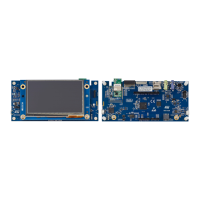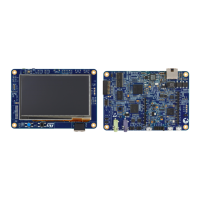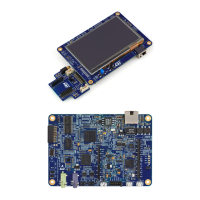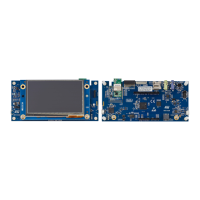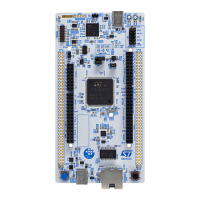3.1.1 HSE and LSE bypass (external user clock)
In this mode, an external clock source must be provided to OSC_IN/OSC32_IN pins. For LSE bypass, the
external source has to be "low swing".The signal (square, sinus or triangle) with ~50% duty cycle drives the
OSC_IN/OSC32_IN pin.
3.1.2 External crystal/ceramic resonator (HSE crystal)
The external oscillator has the advantage of producing a very accurate main clock.
Using a 25 MHz oscillator is a good choice for accurate USB OTG high-speed peripheral, I2S and SAI.
The resonator and the load capacitors have to be connected as close as possible to the oscillator pins in order to
minimize the output distortion and start-up stabilization time. The load capacitance values must be adjusted
according to the selected oscillator.
For CL1 and CL2, use high-quality ceramic capacitors in the 5 pF to 25 pF range (typical), designed for high-
frequency applications and selected to meet the requirements of the crystal or resonator. CL1 and CL2 are
usually the same value. The crystal manufacturer typically specifies a load capacitance that is the series
combination of CL1 and CL2. The PCB and MCU pin capacitances must be included when sizing CL1 and CL2
(10 pF can be used as a rough estimate for the combined pin and board capacitance).
The HSERDY flag in the RCC clock control register (RCC_CR) indicates if the high-speed external oscillator is
stable or not. At start-up, the clock is not provided until this bit is set by hardware. An interrupt can be generated if
enabled in the RCC clock interrupt register (RCC_CIR).
If it is not used as clock source, the HSE oscillator can be switched off using the HSEON bit in the RCC clock
control register (RCC_CR).
AN5419
Introduction
AN5419 - Rev 2
page 22/50
